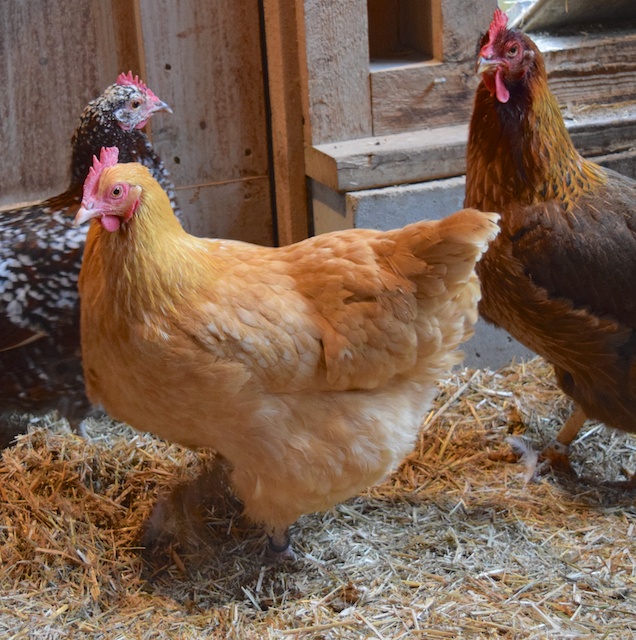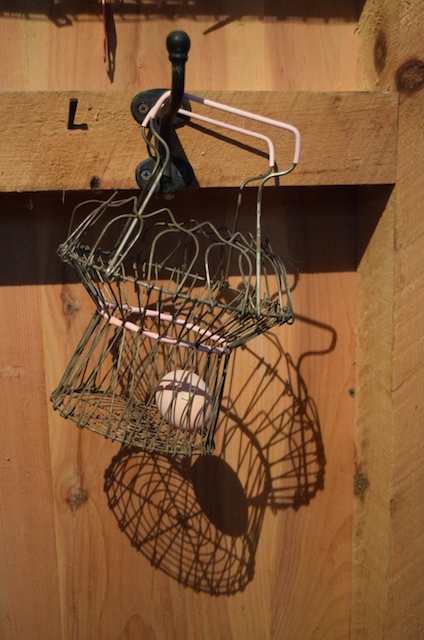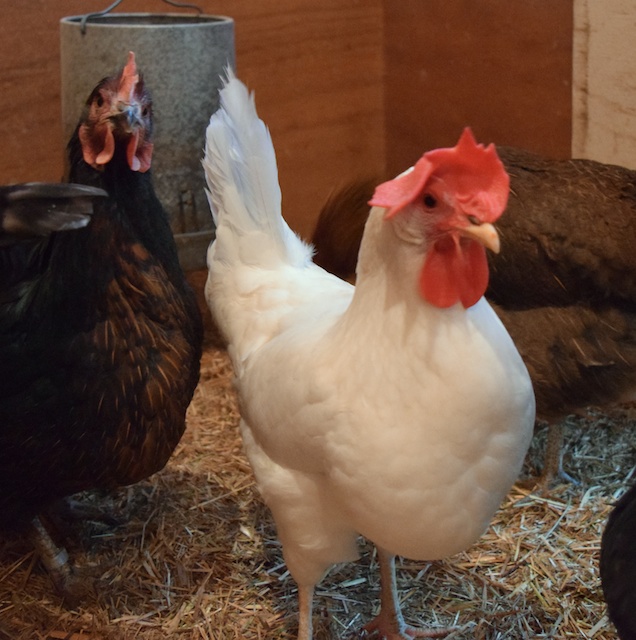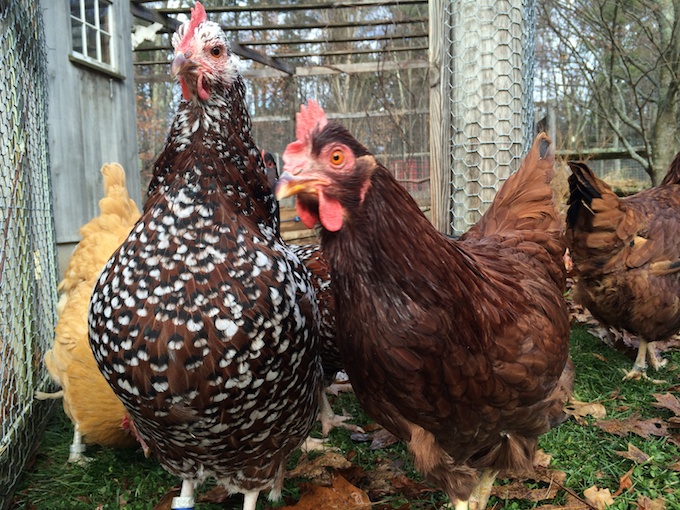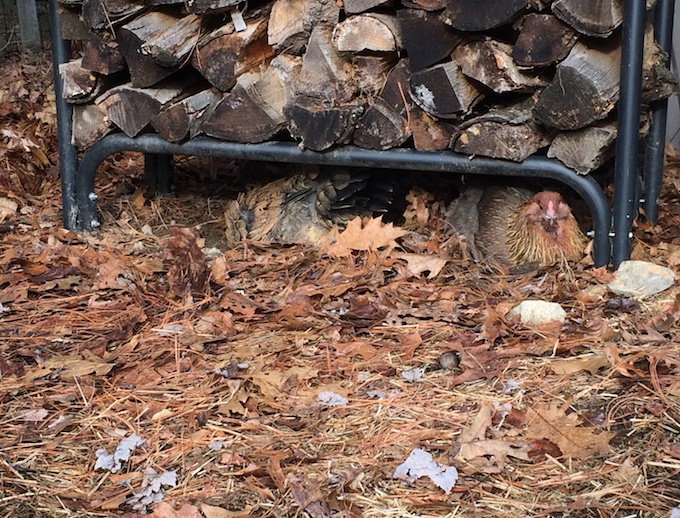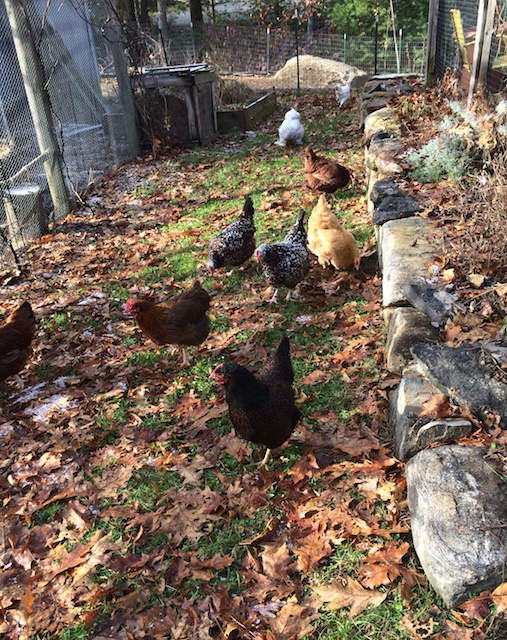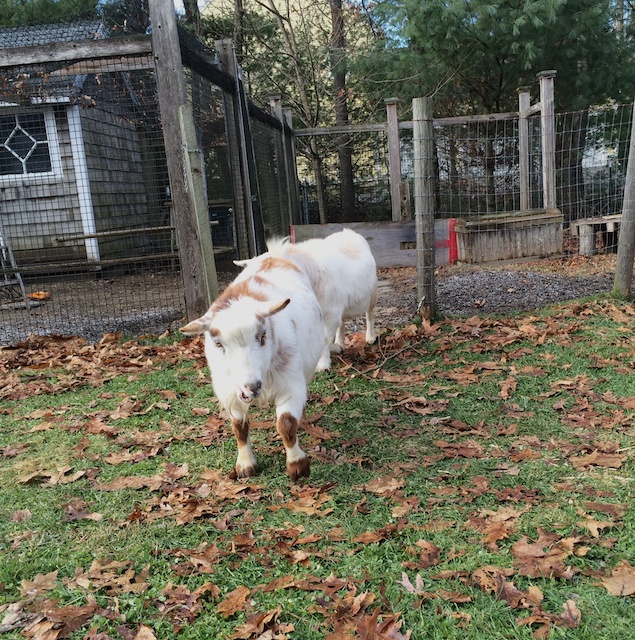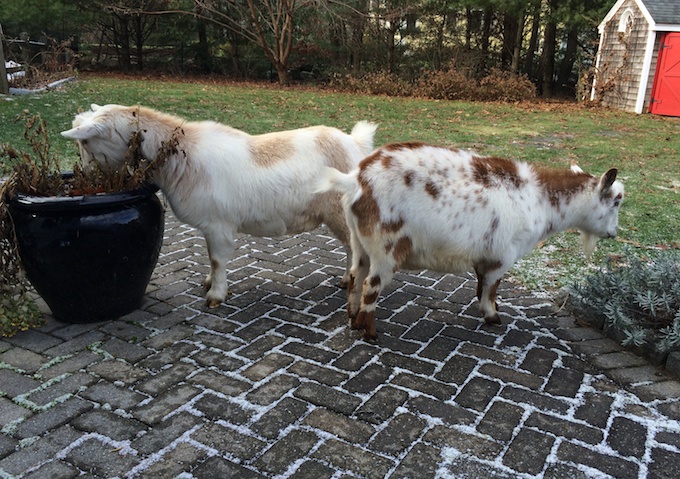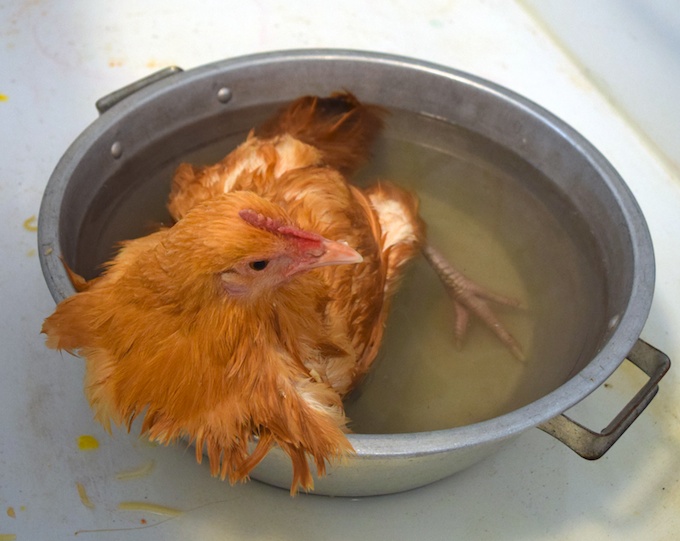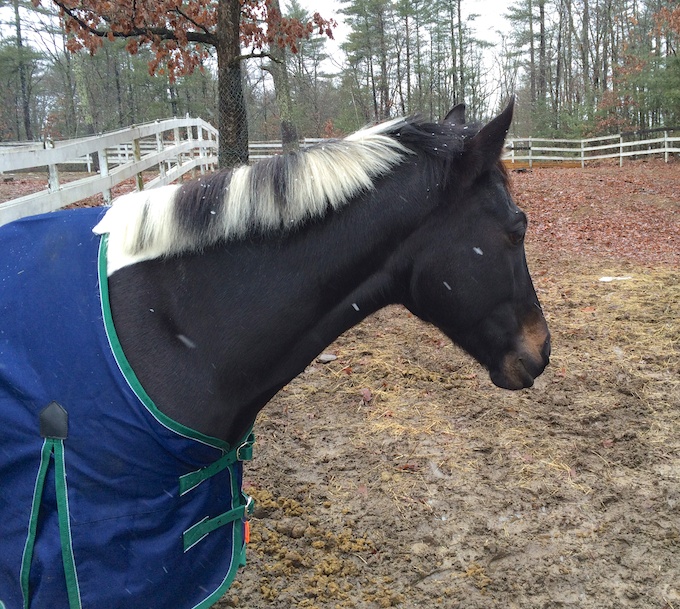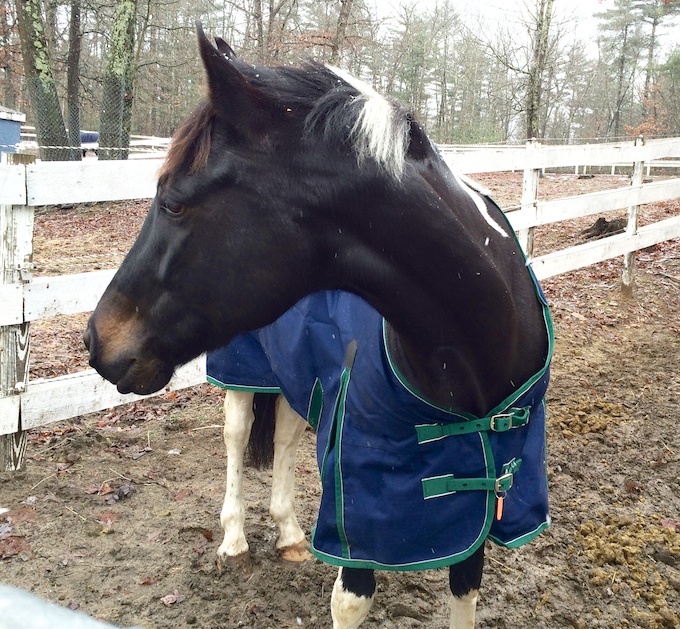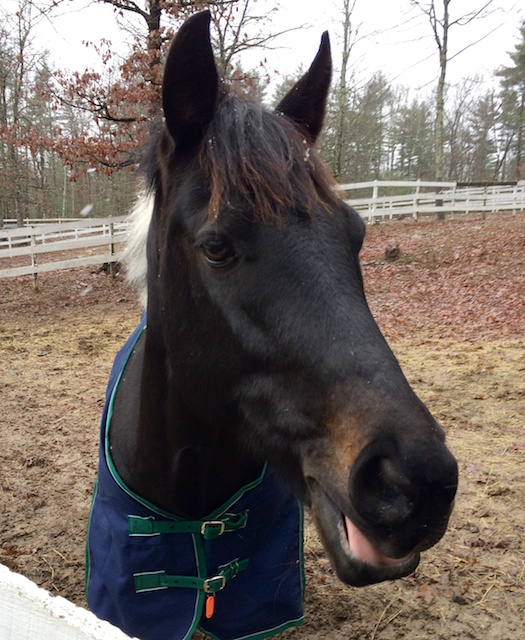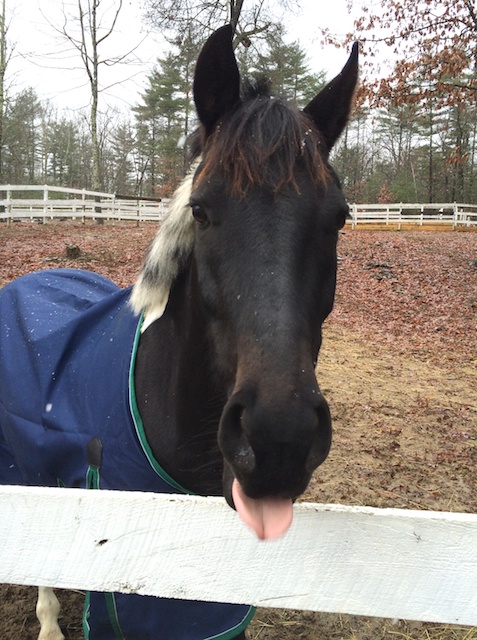Yesterday a nor’easter blew through. The name of the storm refers to the direction that the wind is coming from – the north and east – which around here means it’s whipping off of the Atlantic Ocean. This nor’easter brought drenching cold rain, with stretches of sleet and snow. For more than 24 hours, the rain came down in torrents. The pond is near to overflowing.
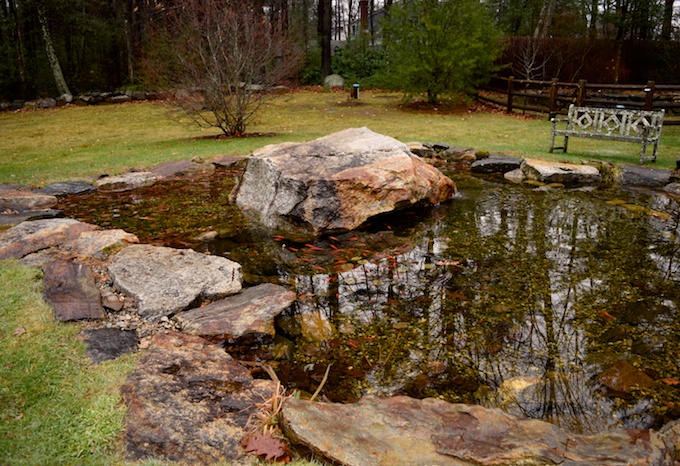
The animals stayed inside. Damp air, wet ground, and enclosed chickens pooping in one place, are all a recipe for illness. I can’t count on the sun to dry things out. Rain, drizzle and snow are all predicted for the rest of the week. I usually pick out the manure every few days, and do a good coop clean on the weekend. After yesterday’s downpour, and with more to come, I decided to be proactive in my flock’s care. I got up early and did what I could.
I can’t dry out the runs, but I can rake up leaves and manure. I don’t want the girls to be milling about on rotting vegetation.
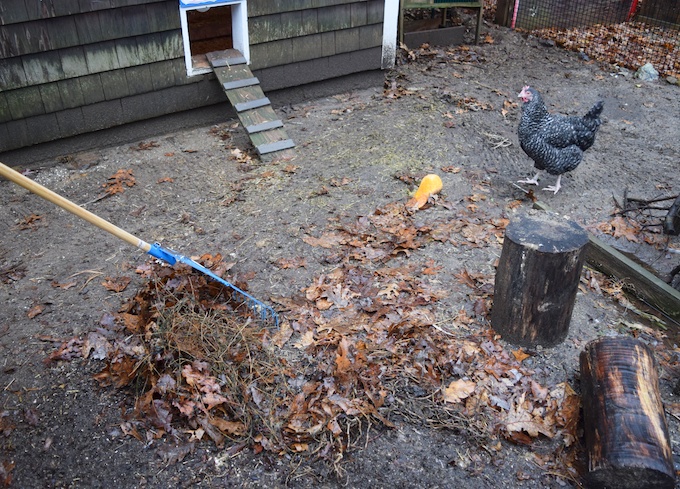
Next, I used the fine-tined pitchfork to muck out manure. I also shoveled out a wet area that Phoebe used as her litter box. She usually does her business outside, but when it storms, she goes in a corner. She’s tidy, but that pee just adds to the moisture in the barn, so I cleaned it out.
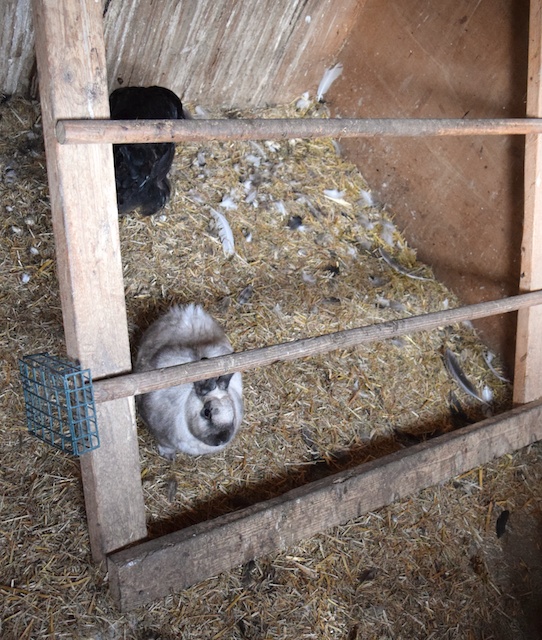
I put down lots of fresh bedding, which not only dries things out, but also gets the hens active, which helps to keep the girls healthy.
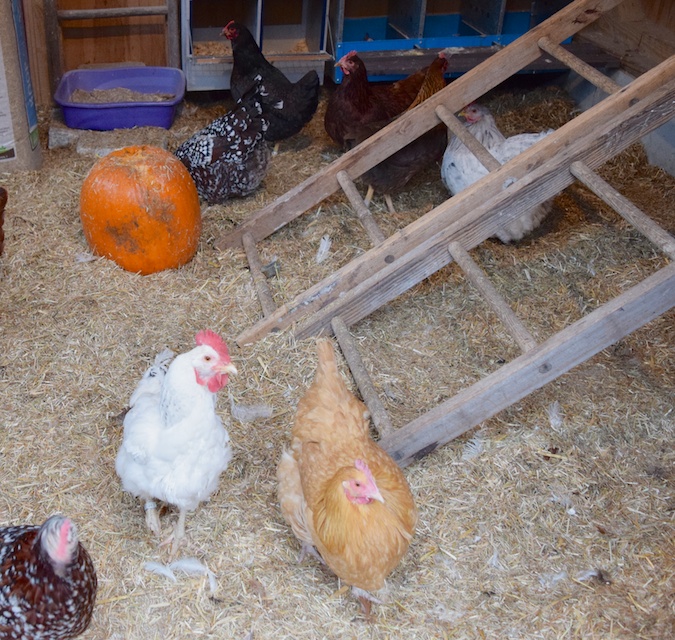
During a nor’easter, you have to close the doors, or everything would be soaked. However, the last thing that you should do during bad weather is to shut the barn up tight. Both of my coops have excellent ventilation, but even so, I opened the doors wide this morning while mucking out. Even though it was drizzling, fresh air is essential.

I also encouraged the girls to get outside. I rarely feed scratch grains, but this morning they got a handful of cracked corn.
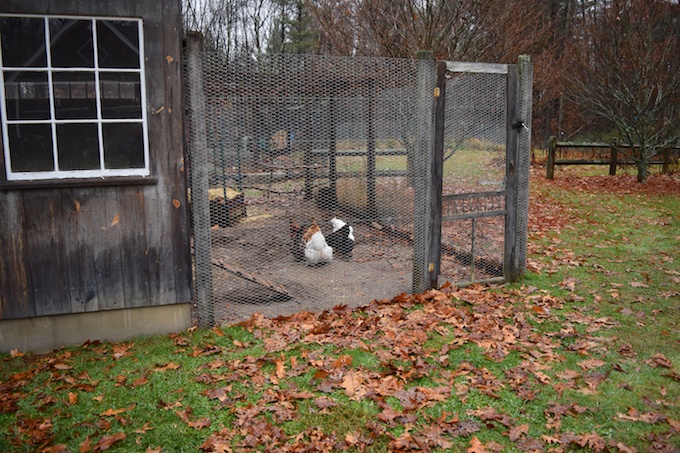
In order to keep external parasites in check, and to keep their feathers in good shape, hens need to dust bathe. Obviously, if the run is a mucky mess, they can’t roll around in dirt outside. That’s why I provide them with a sand-filled litter box in the coop. It only works if it’s kept tidy, so I scooped that out this morning, too. (You can see how unappealing it was in this photo taken before I sifted through it.)
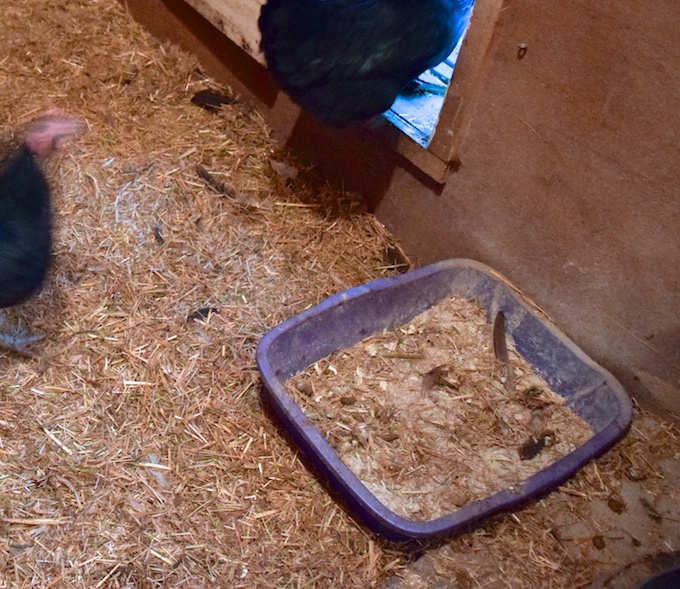
Lastly, I’ve been keeping the hens busy with pumpkins, which they peck at all the way down to the skin. They hadn’t quite finished the butternut squash (seen on the right in this photo) but, with the above-freezing temps and dampness, that veg was about to rot, so I tossed it in the compost pile before it could add to the moisture and mess in the coop.
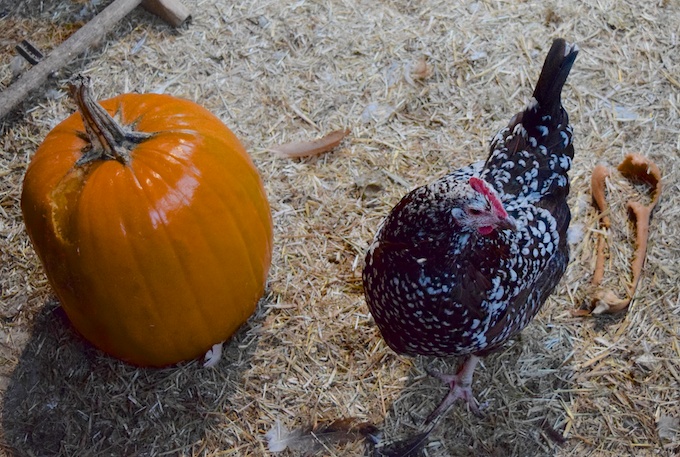
All of these chores took less than a half-hour this morning (including cleaning the goats’ stall which is a story for another day!) It was time well spent.

